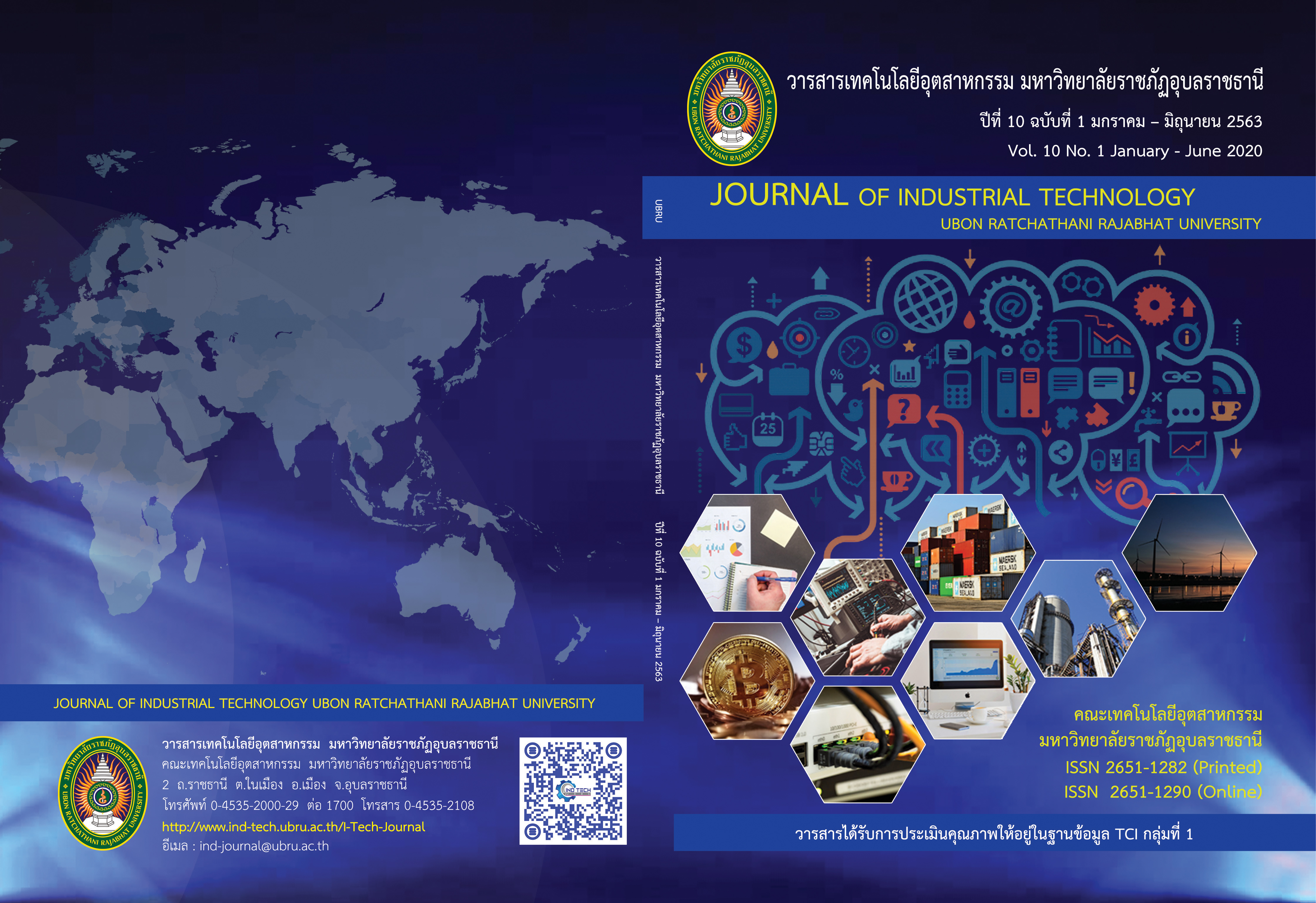กรอบแนวคิดการเรียนรู้แบบสะเต็มเกมมิฟิเคชันผ่านคลาวด์เทคโนโลยีเพื่อส่งเสริม ความฉลาดทางดิจิทัล
Main Article Content
บทคัดย่อ
กระบวนการเรียนรู้แบบสะเต็มเกมมิฟิเคชันประกอบด้วยการบูรณาการหลายกลุ่มวิชา เป็นออกแบบการจัดการเรียนรู้แนวทางการเรียนรู้แบบสะเต็มเชิงวิศวกรรม และแทรกกระบวนการเรียนรู้แบบเกมมิฟิเคชันในแต่ละกระบวนการ เพื่อมุ่งเน้นให้ผู้เรียนได้ความรู้ ความเชี่ยวชาญในสาขาวิชาที่เรียน เกิดความสนุกสนาน ท้าทาย กระตุ้นในกิจกรรมการเรียนรู้ และเกิดนวัตกรรมจากองค์ความรู้ของผู้เรียนอย่างยั่งยืน รูปแบบการเรียนรู้นี้ประกอบด้วยขั้นตอน 6 ขั้น ได้แก่ ขั้นที่ 1 กำหนดนวัตกรรม ขั้นที่ 2 รวบรวมข้อมูล ขั้นที่ 3 ออกแบบ ขั้นที่ 4 สร้างนวัตกรรม ขั้นที่ 5 ทดสอบ ขั้นที่ 6 นำเสนอผลงาน การจัดการเรียนรู้ตามแนวทางนี้อาศัยเทคโนโลยีการสื่อสารด้วยคลาวด์เทคโนโลยีในรูปแบบการให้บริการซอฟต์แวร์ที่ให้บริการในปัจจุบัน สำหรับส่งเสริมความฉลาดทางดิจิทัลให้แก่ผู้เรียน เพราะผู้เรียนนั้นจะต้องรู้จักเลือกแหล่งเรียนรู้ พิจารณาและตัดสินใจในการเชื่อข้อมูลที่ถูกต้องบนโลกดิจิทัลในการนำมาใช้สำหรับพัฒนาทักษะการเรียนรู้ของตน การเลือกวิธีการนำเสนอ และสื่อสารระหว่างผู้เรียนกับผู้สอน ผู้เรียนกับผู้เรียนอย่างมีวิจารณญาณ สามารถยอมรับตัวตน การแสดงความเห็นอกเห็นใจผู้อื่นบนโลกไซเบอร์
Article Details

This work is licensed under a Creative Commons Attribution-NonCommercial-NoDerivatives 4.0 International License.
บทความที่ได้รับการตีพิมพ์ในวารสารฯ ท้ังในรูปแบบของรูปเล่มและอิเล็กทรอนิกส์เป็นลิขสิทธิ์ของวารสารฯ
References
Ceylan S, Ozdilek Z. Improving a Sample Lesson Plan for Secondary Science Courses within the STEM Education. Social and Behavioral Sciences. 2015; 177: 223-228.
Orwin L, Kist AA, Maxwell AD, Maiti A. Using gamification to create opportunities for engagement, collaboration and communication in a peer-to-peer environment for making and using Remote Access Labs. 2015 3rd Experiment International Conference (exp.at'15); 2015 June 2-4; Ponta Delgada. Portugal: 2015. p.230-236.
Anupan A, Nilsook P, Wannapiroon P. Knowledge Engineering Management System on Cloud Technology for Externship Students. 2016 IEEE International Conference on Teaching, Assessment, and Learning for Engineering (TALE); 2016 December 7-9; Bangkok. Thailand: 2016. p. 385-388.
Engineering for Kids. ENGINEERING FOR KIDS [Internet]. 2017 [cited 2017 December 18] available from: http://engineeringforkids.com/article/02-02-2016_importanceofstem
Bouchillon E. Study.com [Internet]. 2017 [cited 2017 December 18] available from: http://study. com/academy/lesson/what-is-stem-education-definition-importance-standards.html
Kintsakis D, Rangoussi M. An early introduction to STEM education: teaching Computer Programming Principles to 5th graders though an e-learning platform: A game-based approach. 2017 IEEE Global Engineering Education Conference (EDUCON); 2017 April 25-28; Athens. Greece; 2017. p. 17-23.
Thorsteinsson G, Niculescu A. Pedagogical Insights into the Use of Minecraft within Educational Setting. Studies in Informatics and Control. 2016: 25(4): 507-516.
Xu F, Buhalis D, Weber J. Serious games and the gamification of tourism. Tourism Management. 2016; 60: 244-256.
Seixas LdR, Gomes AS, Filho IJdM. Effectiveness of gamification in the engagement of students. Computers in Human Behavior. 2016; 58: 48-63.
Scepanovic S, Zaric N, Matijevic T. GAMIFICATION IN HIGHER EDUCATION LEARNING-STATE OF THE ART, CHALLENGES AND OPPORTUNITIES. The Sixth International Conference on e-Learning (e-Learning-2015); 2015 September 24-25; Belgrade. Serbia. 2015.
Hamzah WMAFW, Ali NH, Saman MYM, Yusoff MH, Yacob A. Enhancement of the ARCS Model for Gamification of Learning. 2013 3rd International Conference on User Science and Engineering (i-USEr); 2014 September 2-5; Shah Alam. Malaysia: 2014. p. 287-291.
Urh M, Vukovic G, Jereb E, Pintar R. The Model for Introduction of Gamification into e-learning in higher education. Procedia Social and Behavioral Sciences. 2015; 197: 388-397.
Hsin-Yuan Huang W, Soman D. A practitioner's guide to gamification of education [Internet]. 2013 [cited 2017 December 17] available from: http://inside.rotman.utoronto.ca/ behaviouraleconomicsinaction
Rajamarthandan S. Cognizant [Internet]. 2014 [cited 2017 December 17] available from: https://www.cognizant.com/industries-resources/media_and_entertainment/Using-Gamification-to-Build-a-Passionate-and-Quality-Driven-Software-Development-Team.pdf
Becker K. The Becker Blog [Internet]. 2014 [cited 2017 October 21] available from: http://minkhollow. ca/beckerblog/2014/07/21/seven-key-elements-of-gamification-plus-or-minus-two/
Microsoft. Microsoft Azure [Internet]. 2017 [cited 2017 December 17] available from: https://azure.microsoft.com/en-us/overview/what-is-cloud-computing/
Namasudra S, Roy P, Balusamy B. Cloud Computing: Fundamentals and Research Issues. 2017 Second International Conference on Recent Trends and Challenges in Computational Models (ICRTCCM); 2017 February 3-4; Tindivanam. India: 2017. p. 7-12.
SDxCentral. SDxCentral [Internet]. 2017 [cited 2017 December 17] available from: https://www. sdxcentral.com/cloud/definitions/what-is-cloud/
Priyadarshinee P, Gardas BB, Jha MK, Raut RD. Understanding and predicting the determinants of cloud computing adoption: A two staged hybrid SEM - Neural networks approach. Computers in Human Behavior. 2017; 76: 341-362.
He P, Qiu J, Zhai B. Study in the Integration of Cloud Computing and Moodle Learning Platform. 2015 IEEE International Conference on Communication Software and Network (ICCSN); 2015 June 6-7; Chengdu. China: 2015. p. 367-371.
Cavazza F. FredCavazza.net [Internet]. 2017 [cited 2017 December 22] available from: https://fredcavazza.net/2017/04/19/social-media-landscape-2017/
Yuhyun P. World Economic Forum [Internet]. 2016 [cited 2017 December 18] available from: https://www.weforum.org/agenda/2016/06/8-digital-skills-we-must-teach-our-children/
Waller S. SIMON WALLER [Internet] 2017 [cited 2017 November 21] available from: https://www. simonwaller.com.au/digital-intelligence/
Wannapiroon P, Wattananaiya N. Digital Intelligence. Journal of Technical Education Development. 2017; 29(102): 12-20. (in Thai)
Yildirim I. The effects of gamification-based teaching practices on student achievement and students' attitudes toward lessons. The Internet and Higher Education. 2017; 33: 86-92.
Somabut A, Chaijaroen S. Taxonomy for the design and development of leaning environments to enhance Digital Literacy in higher education. 2017 6th IIAI International Congress on Advanced Applied Informatics (IIAI-AAI); 2017 July 9-13; Hamamatsu. Japan: 2017; p.774-779.
Peñalva Vélez A, Leiva Olivencia JJ, Irazábal Zuazua I. The role of adults in children digital literacy. Procedia - Social and Behavioral Sciences. 2017; 237: 887–892.

